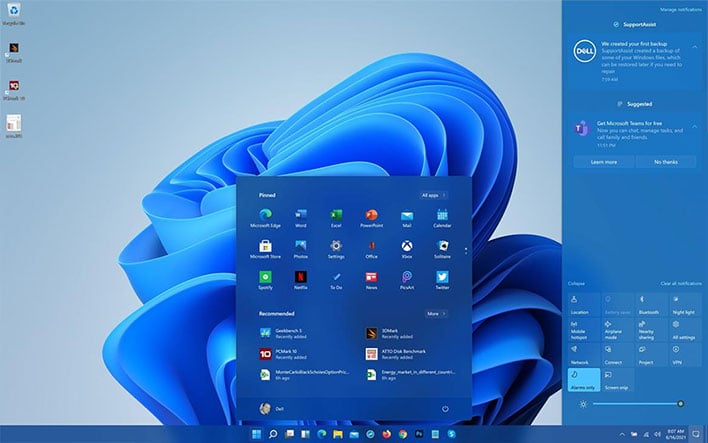Bend Windows 11 To Your Will With These Easy-To-Apply Registry Hacks
Have you heard? There is a new version of Windows coming, and unless the leaked build going around and all the hints Microsoft has been dropping are big fake outs, then it will be called Windows 11. The leaked ISO is neat because it gives us an early glimpse at what is in store for the post-Windows 10 era, and while the final build will inevitably be at least a little bit different, a lot of it probably won't change. What's also interesting is that the early Windows 11 build can be customized with a handful of registry tweaks.
If this is the first time you are hearing about Windows 11, you might be wondering, 'Wasn't Windows 10 supposed to be the last version of Windows ever?' You are not mistaken—that is how Microsoft pitched it, but hey, plans change. Fortunately, it looks like Windows 11 will be a free upgrade for anyone who already owns a genuine license for previously versions of Windows, dating back to Windows 7.
That is the same approach Microsoft took with Windows 10, which technically was only supposed to be a free upgrade for the first year (Protip: it still is after all this time). We'll see how things play out with Windows 11. In the meantime, we've already kicked the tires with a Windows 11 performance preview, and the early benchmark results we obtained suggest it is indeed primed for hybrid CPU architectures, which bodes well for Intel and its upcoming Alder Lake processors, and AMD's eventual Zen 5 stack (if the rumors are true about Zen 5).
Move The Start Menu And Other Windows 11 Registry Hacks
What about those Windows 11 registry hacks? A handful of working edits have emerged, and they allow you to customize certain aspects of Windows 11. One that will probably be popular among early adopters is the ability to move the Start menu from its new center position back over to the left side.
You can do this by going to HKEY_CURRENT_USER\Software\Microsoft\
Windows\CurrentVersion\Explorer\Advanced\ "TaskbarAl" and changing the DWORD 32-bit setting from "1" (center) to "0" (left).
If you want to take things a step further, you can even switch back to the Classic menu from Windows 10, rather than use the new one that is plucked from Windows 10X, which is now defunct. To do that, go to HKEY_CURRENT_USER\Software\Microsoft\Windows\
CurrentVersion\Explorer\Advanced\ "Start_ShowClassicMode" and change the DWORD 32-bit setting from "0" (Windows 11 menu) to "1" (Windows 10 Classic menu).
Here are some other things you can manipulate in Windows 11 by making edits to the registry...
Enable/Disable Windows 1 Snap Assist Flyout
-- HKEY_CURRENT_USER\Software\Microsoft\Windows\
CurrentVersion\Explorer\Advanced\ "EnableSnapAssistFlyout"
-- Change DWORD 32-bit setting from "0" (disabled) to "1" (enabled) or vice versa
Change the Windows 11 Taskbar Size
-- HKEY_CURRENT_USER\Software\Microsoft\ Windows\
CurrentVersion\Explorer\Advanced\ "TaskbarSi"
-- Edit DWORD 32-bit setting to "0" (small), "1" (medium), or "2" (large)
Make Widgets on the Taskbar Hidden or Visible
-- HKEY_CURRENT_USER\Software\Microsoft\ Windows\
CurrentVersion\Explorer\Advanced\ "TaskbarDa"
-- Edit DWORD 32-bit setting to "0" (hidden) or "1" (visible)
One word of warning—you can break things by mucking around in the registry, and so it is always a good idea to back up your important data first. You should also back up the registry itself. Of course, if you are playing around with the leaked Windows 11 ISO, you are probably not running a mission critical system, or at least you should not be.
In any event, have fun with these registry hacks!



